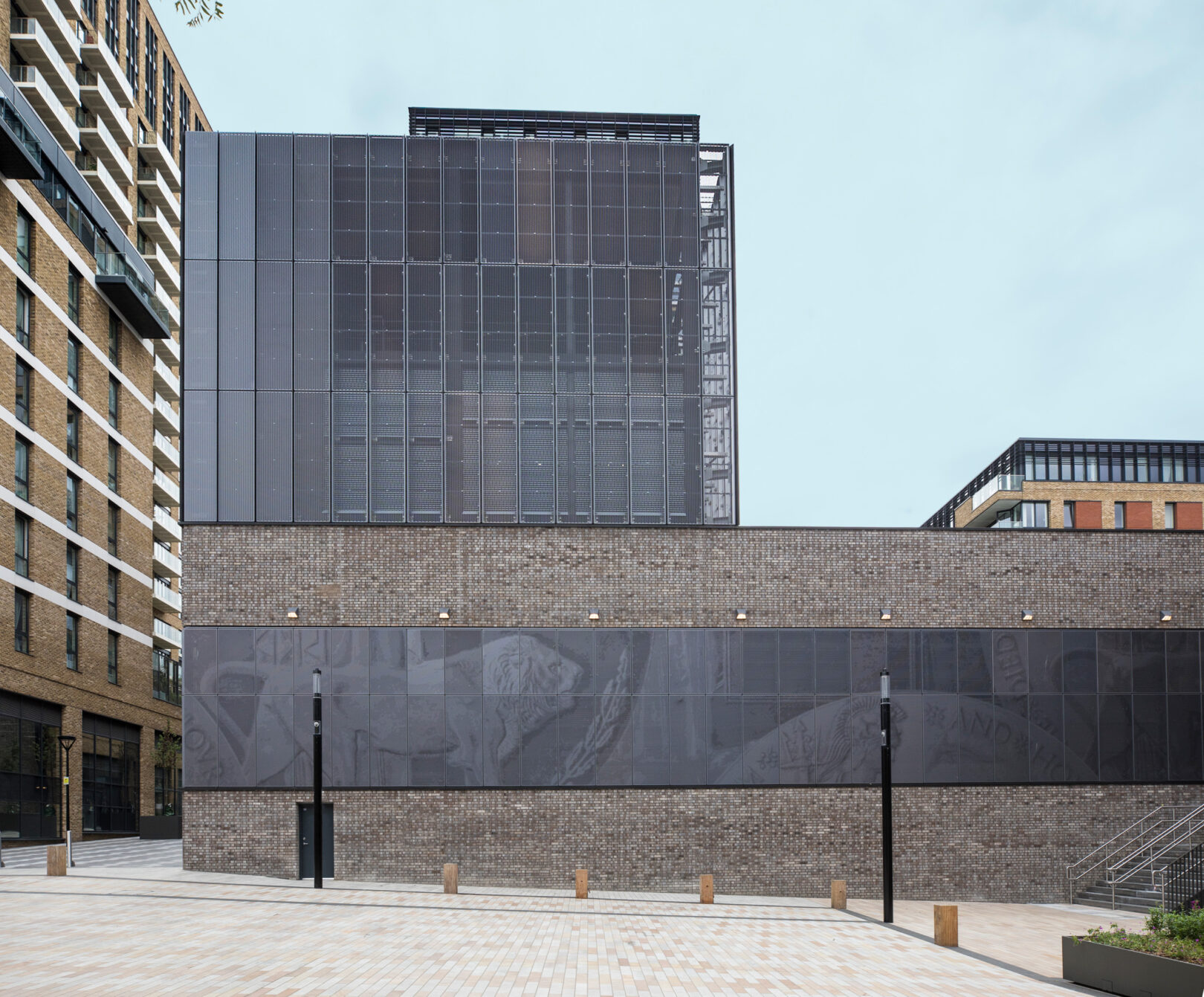Seamless integration with the masterplan
Woolwich station is a complex, multi-disciplinary project that demanded innovative design solutions to achieve the client’s visionary ambition. In addition, the scheme involved a significant range of stakeholders including Crossrail, Berkeley Homes, Royal Borough of Greenwich, Transport for London, Rail for London, CABE, Historic England, as well as local communities and schools.
The site, steeped in military history, was the largest armaments manufacturer in WWI. Our design needed to respond sensitively, but define its own civic presence, carefully considering the surrounding oversite developments which are situated above the platform and adjacent to the over ground structures. Key to the project’s success was our ability to integrate the station seamlessly into the Royal Arsenal masterplan.
Reflecting a remarkable history
Woolwich is a 256m long box railway station which includes two over ground structures connected by a sub-surface platform.
To link the station with its remarkable history, two major facades depict a contemporary representation of a memorial bronze plaque which was developed on the site during WWI. The plaques, popularly known as the Dead Man’s Penny, were given to the widows of soldiers that gave their lives, over one million were cast.
The station entrance incorporates over 350 cast bronze panels, each two metres wide and weighing more than 80kg. They express an exploded ‘Woolwich rifling’ motif, which was developed on site in 1865. The panels are manufactured with the same authentic techniques used at the Royal Arsenal site during the war. Fundamental to the project’s success was our decision to engage key stakeholders early in the scheme, allowing us to expose any untapped value from the masterplan.
We achieved this by minimising the box structure, reducing plant areas, raising rail levels and relocating the station entrance. This resulted in a cost-effective civils package which allowed for an entirely new development block.
Our understanding of the surrounding development phasing, third party interface requirements and the local development plan unlocked significant cost and programme savings.

Awards
Civic Trust Award
Civic Trust Special Transport & Infrastructure Award
